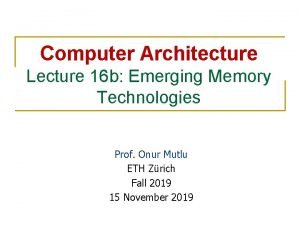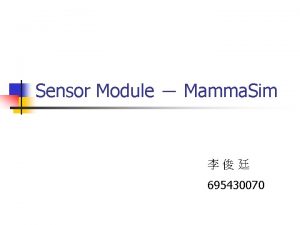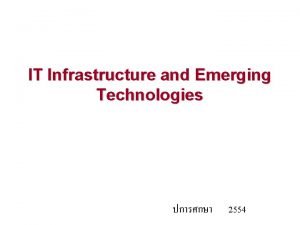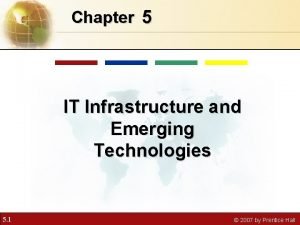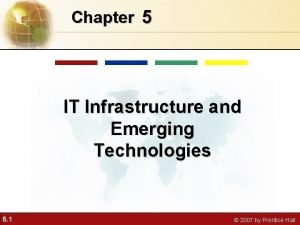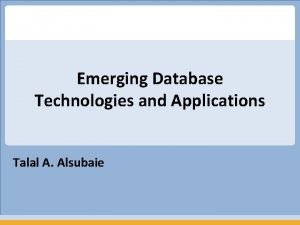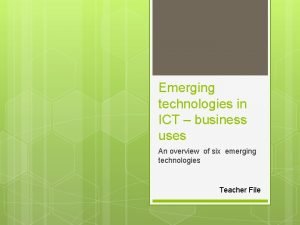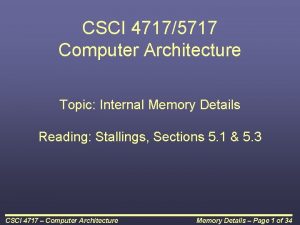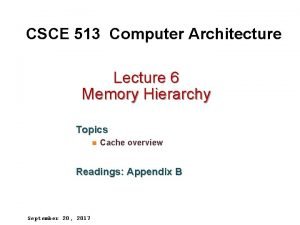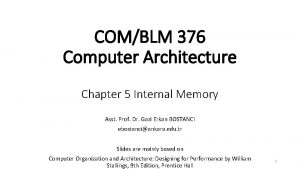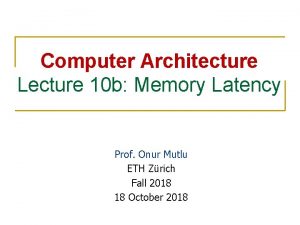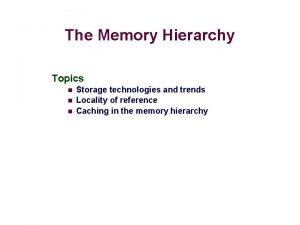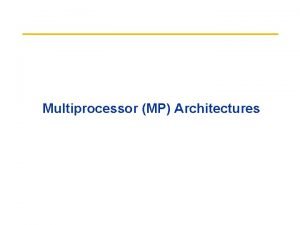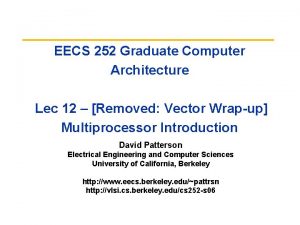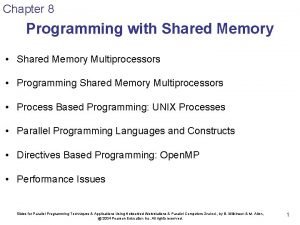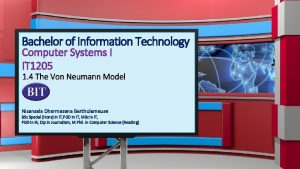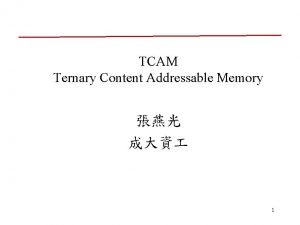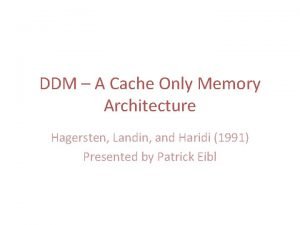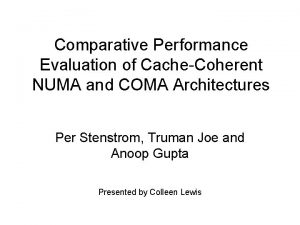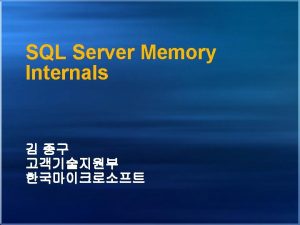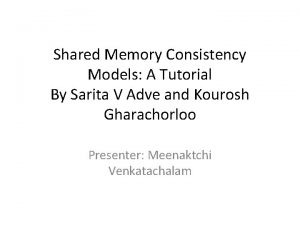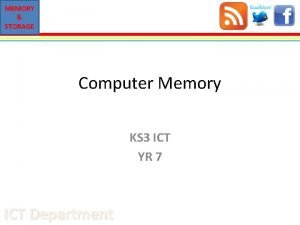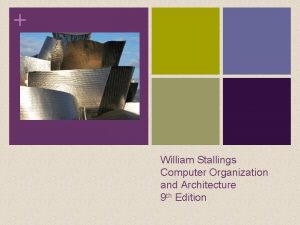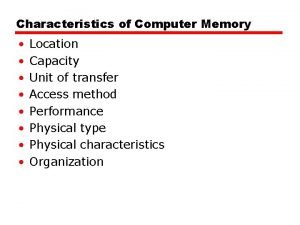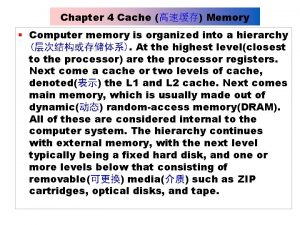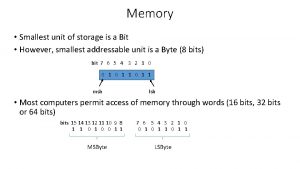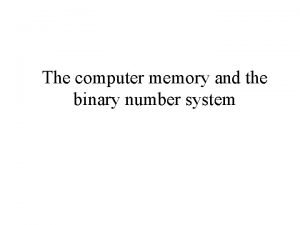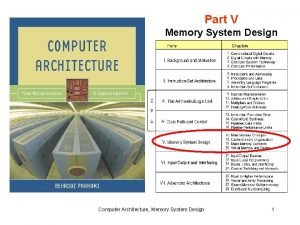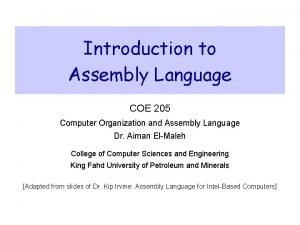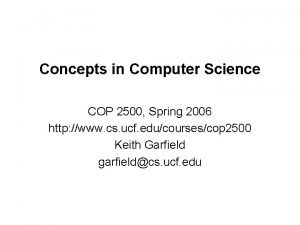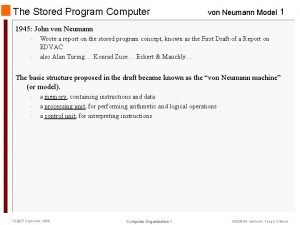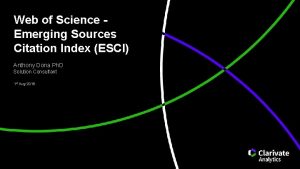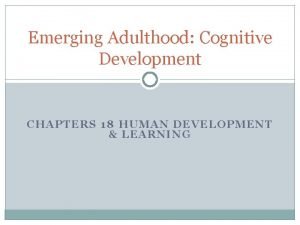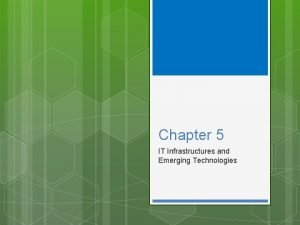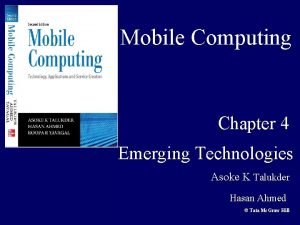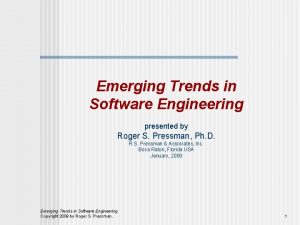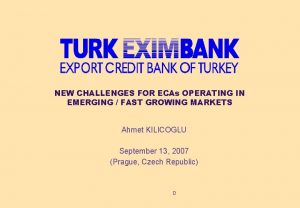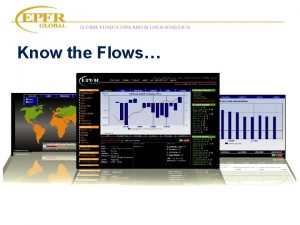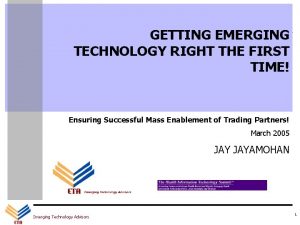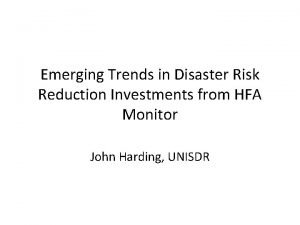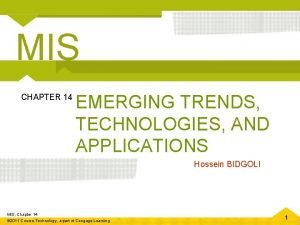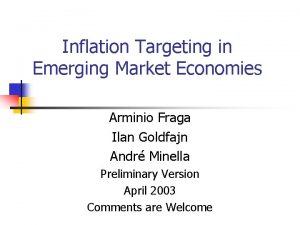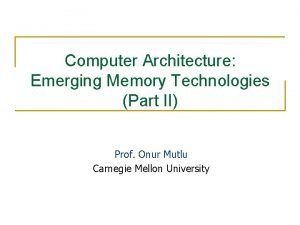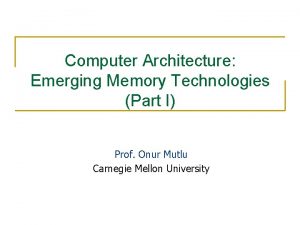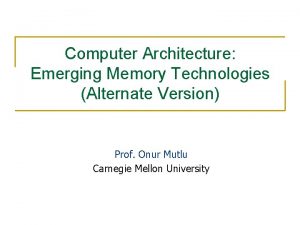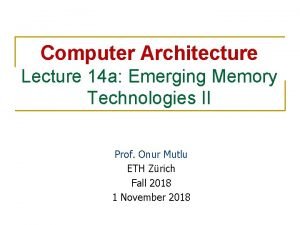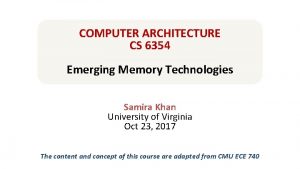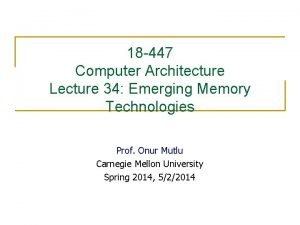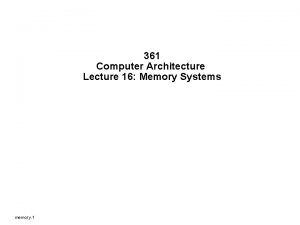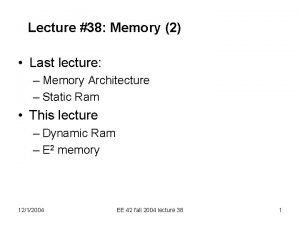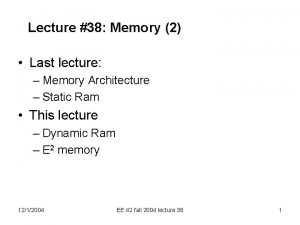Computer Architecture Lecture 13 Emerging Memory Technologies Prof














































![Hybrid vs. All-PCM/DRAM [ICCD’ 12] 16 GB PCM 16 GB DRAM 2 1, 8 Hybrid vs. All-PCM/DRAM [ICCD’ 12] 16 GB PCM 16 GB DRAM 2 1, 8](https://slidetodoc.com/presentation_image_h2/ea0c3c38546c1d9b076b4e6ed45070b3/image-47.jpg)



![Our Goal [CLUSTER 2017] A generalized mechanism that 1. Directly estimates the performance benefit Our Goal [CLUSTER 2017] A generalized mechanism that 1. Directly estimates the performance benefit](https://slidetodoc.com/presentation_image_h2/ea0c3c38546c1d9b076b4e6ed45070b3/image-51.jpg)















![Banshee [MICRO 2017] n Tracks presence in cache using TLB and Page Table q Banshee [MICRO 2017] n Tracks presence in cache using TLB and Page Table q](https://slidetodoc.com/presentation_image_h2/ea0c3c38546c1d9b076b4e6ed45070b3/image-67.jpg)























![CURRENT SOLUTIONS Explicit interfaces to manage consistency – NV-Heaps [ASPLOS’ 11], BPFS [SOSP’ 09], CURRENT SOLUTIONS Explicit interfaces to manage consistency – NV-Heaps [ASPLOS’ 11], BPFS [SOSP’ 09],](https://slidetodoc.com/presentation_image_h2/ea0c3c38546c1d9b076b4e6ed45070b3/image-91.jpg)
![CURRENT SOLUTIONS Explicit interfaces to manage consistency – NV-Heaps [ASPLOS’ 11], BPFS [SOSP’ 09], CURRENT SOLUTIONS Explicit interfaces to manage consistency – NV-Heaps [ASPLOS’ 11], BPFS [SOSP’ 09],](https://slidetodoc.com/presentation_image_h2/ea0c3c38546c1d9b076b4e6ed45070b3/image-92.jpg)










![CURRENT SOLUTIONS Explicit interfaces to manage consistency – NV-Heaps [ASPLOS’ 11], BPFS [SOSP’ 09], CURRENT SOLUTIONS Explicit interfaces to manage consistency – NV-Heaps [ASPLOS’ 11], BPFS [SOSP’ 09],](https://slidetodoc.com/presentation_image_h2/ea0c3c38546c1d9b076b4e6ed45070b3/image-103.jpg)


































- Slides: 137

Computer Architecture Lecture 13: Emerging Memory Technologies Prof. Onur Mutlu ETH Zürich Fall 2018 31 October 2018

Emerging Memory Technologies 2

Limits of Charge Memory n Difficult charge placement and control q q n Flash: floating gate charge DRAM: capacitor charge, transistor leakage Reliable sensing becomes difficult as charge storage unit size reduces 3

Solution 1: New Memory Architectures n Overcome memory shortcomings with q q q n Memory-centric system design Novel memory architectures, interfaces, functions Better waste management (efficient utilization) Key issues to tackle q q q Enable reliability at low cost high capacity Reduce energy Reduce latency Improve bandwidth Reduce waste (capacity, bandwidth, latency) Enable computation close to data 4

Solution 1: New Memory Architectures n n n n n n n n n n n n Liu+, “RAIDR: Retention-Aware Intelligent DRAM Refresh, ” ISCA 2012. Kim+, “A Case for Exploiting Subarray-Level Parallelism in DRAM, ” ISCA 2012. Lee+, “Tiered-Latency DRAM: A Low Latency and Low Cost DRAM Architecture , ” HPCA 2013. Liu+, “An Experimental Study of Data Retention Behavior in Modern DRAM Devices , ” ISCA 2013. Seshadri+, “Row. Clone: Fast and Efficient In-DRAM Copy and Initialization of Bulk Data , ” MICRO 2013. Pekhimenko+, “Linearly Compressed Pages: A Main Memory Compression Framework , ” MICRO 2013. Chang+, “Improving DRAM Performance by Parallelizing Refreshes with Accesses, ” HPCA 2014. Khan+, “The Efficacy of Error Mitigation Techniques for DRAM Retention Failures: A Comparative Experimental Study , ” SIGMETRICS 2014. Luo+, “Characterizing Application Memory Error Vulnerability to Optimize Data Center Cost , ” DSN 2014. Kim+, “Flipping Bits in Memory Without Accessing Them: An Experimental Study of DRAM Disturbance Errors , ” ISCA 2014. Lee+, “Adaptive-Latency DRAM: Optimizing DRAM Timing for the Common-Case, ” HPCA 2015. Qureshi+, “AVATAR: A Variable-Retention-Time (VRT) Aware Refresh for DRAM Systems, ” DSN 2015. Meza+, “Revisiting Memory Errors in Large-Scale Production Data Centers: Analysis and Modeling of New Trends from the Field , ” DSN 2015. Kim+, “Ramulator: A Fast and Extensible DRAM Simulator , ” IEEE CAL 2015. Seshadri+, “Fast Bulk Bitwise AND and OR in DRAM, ” IEEE CAL 2015. Ahn+, “A Scalable Processing-in-Memory Accelerator for Parallel Graph Processing, ” ISCA 2015. Ahn+, “PIM-Enabled Instructions: A Low-Overhead, Locality-Aware Processing-in-Memory Architecture , ” ISCA 2015. Lee+, “Decoupled Direct Memory Access: Isolating CPU and IO Traffic by Leveraging a Dual-Data-Port DRAM , ” PACT 2015. Seshadri+, “Gather-Scatter DRAM: In-DRAM Address Translation to Improve the Spatial Locality of Non-unit Strided Accesses , ” MICRO 2015. Lee+, “Simultaneous Multi-Layer Access: Improving 3 D-Stacked Memory Bandwidth at Low Cost , ” TACO 2016. Hassan+, “Charge. Cache: Reducing DRAM Latency by Exploiting Row Access Locality, ” HPCA 2016. Chang+, “Low-Cost Inter-Linked Subarrays (LISA): Enabling Fast Inter-Subarray Data Migration in DRAM, ” HPCA 2016. Chang+, “Understanding Latency Variation in Modern DRAM Chips Experimental Characterization, Analysis, and Optimization , ” SIGMETRICS 2016. Khan+, “PARBOR: An Efficient System-Level Technique to Detect Data Dependent Failures in DRAM , ” DSN 2016. Hsieh+, “Transparent Offloading and Mapping (TOM): Enabling Programmer-Transparent Near-Data Processing in GPU Systems , ” ISCA 2016. Hashemi+, “Accelerating Dependent Cache Misses with an Enhanced Memory Controller , ” ISCA 2016. Boroumand+, “Lazy. PIM: An Efficient Cache Coherence Mechanism for Processing-in-Memory , ” IEEE CAL 2016. Pattnaik+, “Scheduling Techniques for GPU Architectures with Processing-In-Memory Capabilities , ” PACT 2016. Hsieh+, “Accelerating Pointer Chasing in 3 D-Stacked Memory: Challenges, Mechanisms, Evaluation , ” ICCD 2016. Hashemi+, “Continuous Runahead: Transparent Hardware Acceleration for Memory Intensive Workloads , ” MICRO 2016. Khan+, “A Case for Memory Content-Based Detection and Mitigation of Data-Dependent Failures in DRAM ", ” IEEE CAL 2016. Hassan+, “Soft. MC: A Flexible and Practical Open-Source Infrastructure for Enabling Experimental DRAM Studies , ” HPCA 2017. Mutlu, “The Row. Hammer Problem and Other Issues We May Face as Memory Becomes Denser , ” DATE 2017. Lee+, “Design-Induced Latency Variation in Modern DRAM Chips: Characterization, Analysis, and Latency Reduction Mechanisms , ” SIGMETRICS 2017. Chang+, “Understanding Reduced-Voltage Operation in Modern DRAM Devices: Experimental Characterization, Analysis, and Mechanisms , ” SIGMETRICS 2017. Patel+, “The Reach Profiler (REAPER): Enabling the Mitigation of DRAM Retention Failures via Profiling at Aggressive Conditions , ” ISCA 2017. Seshadri and Mutlu, “Simple Operations in Memory to Reduce Data Movement , ” ADCOM 2017. Liu+, “Concurrent Data Structures for Near-Memory Computing , ” SPAA 2017. Khan+, “Detecting and Mitigating Data-Dependent DRAM Failures by Exploiting Current Memory Content , ” MICRO 2017. Seshadri+, “Ambit: In-Memory Accelerator for Bulk Bitwise Operations Using Commodity DRAM Technology , ” MICRO 2017. Kim+, “GRIM-Filter: Fast Seed Location Filtering in DNA Read Mapping Using Processing-in-Memory Technologies , ” BMC Genomics 2018. Kim+, “The DRAM Latency PUF: Quickly Evaluating Physical Unclonable Functions by Exploiting the Latency-Reliability Tradeoff in Modern DRAM Devices , ” HPCA 2018. Boroumand+, “Google Workloads for Consumer Devices: Mitigating Data Movement Bottlenecks , ” ASPLOS 2018. Das+, “VRL-DRAM: Improving DRAM Performance via Variable Refresh Latency, ” DAC 2018. Ghose+, “What Your DRAM Power Models Are Not Telling You: Lessons from a Detailed Experimental Study , ” SIGMETRICS 2018. Kim+, “Solar-DRAM: Reducing DRAM Access Latency by Exploiting the Variation in Local Bitlines , ” ICCD 2018. Wang+, “Reducing DRAM Latency via Charge-Level-Aware Look-Ahead Partial Restoration, ” MICRO 2018. Avoid DRAM: q Seshadri+, “The Evicted-Address Filter: A Unified Mechanism to Address Both Cache Pollution and Thrashing , ” PACT 2012. q Pekhimenko+, “Base-Delta-Immediate Compression: Practical Data Compression for On-Chip Caches , ” PACT 2012. q Seshadri+, “The Dirty-Block Index, ” ISCA 2014. q Pekhimenko+, “Exploiting Compressed Block Size as an Indicator of Future Reuse , ” HPCA 2015. q Vijaykumar+, “A Case for Core-Assisted Bottleneck Acceleration in GPUs: Enabling Flexible Data Compression with Assist Warps , ” ISCA 2015. q Pekhimenko+, “Toggle-Aware Bandwidth Compression for GPUs, ” HPCA 2016. 5

Solution 2: Emerging Memory Technologies n Some emerging resistive memory technologies seem more scalable than DRAM (and they are non-volatile) n Example: Phase Change Memory q q q n Data stored by changing phase of material Data read by detecting material’s resistance Expected to scale to 9 nm (2022 [ITRS 2009]) Prototyped at 20 nm (Raoux+, IBM JRD 2008) Expected to be denser than DRAM: can store multiple bits/cell But, emerging technologies have (many) shortcomings q Can they be enabled to replace/augment/surpass DRAM? 6

n n n n Solution 2: Emerging Memory Technologies Lee+, “Architecting Phase Change Memory as a Scalable DRAM Alternative, ” ISCA’ 09, CACM’ 10, IEEE Micro’ 10. Meza+, “Enabling Efficient and Scalable Hybrid Memories, ” IEEE Comp. Arch. Letters 2012. Yoon, Meza+, “Row Buffer Locality Aware Caching Policies for Hybrid Memories , ” ICCD 2012. Kultursay+, “Evaluating STT-RAM as an Energy-Efficient Main Memory Alternative , ” ISPASS 2013. Meza+, “A Case for Efficient Hardware-Software Cooperative Management of Storage and Memory , ” WEED 2013. Lu+, “Loose Ordering Consistency for Persistent Memory , ” ICCD 2014. Zhao+, “FIRM: Fair and High-Performance Memory Control for Persistent Memory Systems , ” MICRO 2014. Yoon, Meza+, “Efficient Data Mapping and Buffering Techniques for Multi-Level Cell Phase-Change Memories , ” TACO 2014. Ren+, “Thy. NVM: Enabling Software-Transparent Crash Consistency in Persistent Memory Systems , ” MICRO 2015. Chauhan+, “NVMove: Helping Programmers Move to Byte-Based Persistence , ” INFLOW 2016. Li+, “Utility-Based Hybrid Memory Management, ” CLUSTER 2017. Yu+, “Banshee: Bandwidth-Efficient DRAM Caching via Software/Hardware Cooperation , ” MICRO 2017. Tavakkol+, “MQSim: A Framework for Enabling Realistic Studies of Modern Multi-Queue SSD Devices , ” FAST 2018. Tavakkol+, “FLIN: Enabling Fairness and Enhancing Performance in Modern NVMe Solid State Drives , ” ISCA 2018. Sadrosadati+. “LTRF: Enabling High-Capacity Register Files for GPUs via Hardware/Software Cooperative Register Prefetching, ” ASPLOS 2018. 7

Charge vs. Resistive Memories n Charge Memory (e. g. , DRAM, Flash) q q n Write data by capturing charge Q Read data by detecting voltage V Resistive Memory (e. g. , PCM, STT-MRAM, memristors) q q Write data by pulsing current d. Q/dt Read data by detecting resistance R 8

Promising Resistive Memory Technologies n PCM q q n STT-MRAM q q n Inject current to change material phase Resistance determined by phase Inject current to change magnet polarity Resistance determined by polarity Memristors/RRAM/Re. RAM q q Inject current to change atomic structure Resistance determined by atom distance 9

What is Phase Change Memory? n Phase change material (chalcogenide glass) exists in two states: q q Amorphous: Low optical reflexivity and high electrical resistivity Crystalline: High optical reflexivity and low electrical resistivity PCM is resistive memory: High resistance (0), Low resistance (1) PCM cell can be switched between states reliably and quickly 10

How Does PCM Work? n Write: change phase via current injection q q n SET: sustained current to heat cell above Tcryst RESET: cell heated above Tmelt and quenched Read: detect phase via material resistance q amorphous/crystalline Large Current Small Current Memory Element SET (cryst) Low resistance 103 -104 W Access Device RESET (amorph) High resistance 106 -107 W Photo Courtesy: Bipin Rajendran, IBM Slide Courtesy: Moinuddin Qureshi, IBM 11

Opportunity: PCM Advantages n Scales better than DRAM, Flash q q q n Can be denser than DRAM q q n Can store multiple bits per cell due to large resistance range Prototypes with 2 bits/cell in ISSCC’ 08, 4 bits/cell by 2012 Non-volatile q n Requires current pulses, which scale linearly with feature size Expected to scale to 9 nm (2022 [ITRS]) Prototyped at 20 nm (Raoux+, IBM JRD 2008) Retain data for >10 years at 85 C No refresh needed, low idle power 12

PCM Resistance → Value Cell value: 1 0 Cell resistance 13

Multi-Level Cell PCM Multi-level cell: more than 1 bit per cell Further increases density by 2 to 4 x [Lee+, ISCA'09] But MLC-PCM also has drawbacks Higher latency and energy than single-level cell PCM 14

MLC-PCM Resistance → Value Bit 1 Bit 0 Cell value: 11 10 01 00 Cell resistance 15

MLC-PCM Resistance → Value Less margin between values → need more precise sensing/modification of cell contents → higher latency/energy (~2 x for reads and 4 x for writes) Cell value: 11 10 01 00 Cell resistance 16

Phase Change Memory Properties n n Surveyed prototypes from 2003 -2008 (ITRS, IEDM, VLSI, ISSCC) Derived PCM parameters for F=90 nm Lee, Ipek, Mutlu, Burger, “Architecting Phase Change Memory as a Scalable DRAM Alternative, ” ISCA 2009. Lee et al. , “Phase Change Technology and the Future of Main Memory, ” IEEE Micro Top Picks 2010. 17

18

Phase Change Memory Properties: Latency n Latency comparable to, but slower than DRAM n Read Latency q n Write Latency q n 50 ns: 4 x DRAM, 10 -3 x NAND Flash 150 ns: 12 x DRAM Write Bandwidth q 5 -10 MB/s: 0. 1 x DRAM, 1 x NAND Flash Qureshi+, “Scalable high performance main memory system using phase-change memory technology, ” ISCA 2009.

Phase Change Memory Properties n Dynamic Energy q q n Endurance q q n 40 u. A Rd, 150 u. A Wr 2 -43 x DRAM, 1 x NAND Flash Writes induce phase change at 650 C Contacts degrade from thermal expansion/contraction 108 writes per cell 10 -8 x DRAM, 103 x NAND Flash Cell Size q q 9 -12 F 2 using BJT, single-level cells 1. 5 x DRAM, 2 -3 x NAND (will scale with feature size, MLC) 20

Phase Change Memory: Pros and Cons n Pros over DRAM q q q n Cons q q n Better technology scaling (capacity and cost) Non volatile Persistent Low idle power (no refresh) Higher latencies: ~4 -15 x DRAM (especially write) Higher active energy: ~2 -50 x DRAM (especially write) Lower endurance (a cell dies after ~108 writes) Reliability issues (resistance drift) Challenges in enabling PCM as DRAM replacement/helper: q q Mitigate PCM shortcomings Find the right way to place PCM in the system 21

PCM-based Main Memory (I) n How should PCM-based (main) memory be organized? n Hybrid PCM+DRAM [Qureshi+ ISCA’ 09, Dhiman+ DAC’ 09]: q How to partition/migrate data between PCM and DRAM 22

PCM-based Main Memory (II) n How should PCM-based (main) memory be organized? n Pure PCM main memory [Lee et al. , ISCA’ 09, Top Picks’ 10]: q How to redesign entire hierarchy (and cores) to overcome PCM shortcomings 23

An Initial Study: Replace DRAM with PCM n Lee, Ipek, Mutlu, Burger, “Architecting Phase Change Memory as a Scalable DRAM Alternative, ” ISCA 2009. q q Surveyed prototypes from 2003 -2008 (e. g. IEDM, VLSI, ISSCC) Derived “average” PCM parameters for F=90 nm 24

Results: Naïve Replacement of DRAM with PCM n Replace DRAM with PCM in a 4 -core, 4 MB L 2 system n n n PCM organized the same as DRAM: row buffers, banks, peripherals 1. 6 x delay, 2. 2 x energy, 500 -hour average lifetime Lee, Ipek, Mutlu, Burger, “Architecting Phase Change Memory as a Scalable DRAM Alternative, ” ISCA 2009. 25

Architecting PCM to Mitigate Shortcomings n Idea 1: Use multiple narrow buffers in each PCM chip Reduces array reads/writes better endurance, latency, energy n Idea 2: Write into array at cache block or word granularity Reduces unnecessary wear DRAM PCM 26

Results: Architected PCM as Main Memory 1. 2 x delay, 1. 0 x energy, 5. 6 -year average lifetime n n n Scaling improves energy, endurance, density Caveat 1: Worst-case lifetime is much shorter (no guarantees) Caveat 2: Intensive applications see large performance and energy hits Caveat 3: Optimistic PCM parameters? 27

Required Reading: PCM As Main Memory Benjamin C. Lee, Engin Ipek, Onur Mutlu, and Doug Burger, n "Architecting Phase Change Memory as a Scalable DRAM Alternative" Proceedings of the 36 th International Symposium on Computer Architecture (ISCA), pages 2 -13, Austin, TX, June 2009. Slides (pdf) 28

More on PCM As Main Memory (II) n Benjamin C. Lee, Ping Zhou, Jun Yang, Youtao Zhang, Bo Zhao, Engin Ipek, Onur Mutlu, and Doug Burger, "Phase Change Technology and the Future of Main Memory" IEEE Micro, Special Issue: Micro's Top Picks from 2009 Computer Architecture Conferences (MICRO TOP PICKS), Vol. 30, No. 1, pages 60 -70, January/February 2010. 29

STT-MRAM as Main Memory n Magnetic Tunnel Junction (MTJ) device q q Reference layer: Fixed magnetic orientation Free layer: Parallel or anti-parallel Logical 0 Reference Layer Barrier Free Layer n Magnetic orientation of the free layer determines logical state of device q n n High vs. low resistance Logical 1 Reference Layer Barrier Free Layer Write: Push large current through MTJ to change orientation of free layer Read: Sense current flow Word Line MTJ Access Transistor n Kultursay et al. , “Evaluating STT-RAM as an Energy. Efficient Main Memory Alternative, ” ISPASS 2013. Bit Line Sense Line

STT-MRAM: Pros and Cons n Pros over DRAM q q q n Cons q q n Better technology scaling (capacity and cost) Non volatile Persistent Low idle power (no refresh) Higher write latency Higher write energy Poor density (currently) Reliability? Another level of freedom q Can trade off non-volatility for lower write latency/energy (by reducing the size of the MTJ) 31

Architected STT-MRAM as Main Memory n 4 -core, 4 GB main memory, multiprogrammed workloads ~6% performance loss, ~60% energy savings vs. DRAM STT-RAM (base) 97% STT-RAM (opt) 95% 93% 91% 2 pm ix m 3 pm ix m 4 pm ix m 5 pm ix m 6 pm ix m 7 pm ix m 8 pm m ix 9 pm ix 1 Av 0 er ag e m ix 1 pm ix m pm ix 0 89% m Performance vs. DRAM n ACT+PRE WB RB 80% 60% 40% 20% 1 Av 0 er ag e ix 9 ix m pm 8 ix m pm pm 7 ix m 6 pm ix m 5 pm ix m 4 ix m pm pm 3 ix m pm 2 m m pm ix ix pm m 1 0% 0 Energy vs. DRAM 100% Kultursay+, “Evaluating STT-RAM as an Energy-Efficient Main Memory Alternative, ” ISPASS 2013. 32

More on STT-MRAM as Main Memory n Emre Kultursay, Mahmut Kandemir, Anand Sivasubramaniam, and Onur Mutlu, "Evaluating STT-RAM as an Energy-Efficient Main Memory Alternative" Proceedings of the 2013 IEEE International Symposium on Performance Analysis of Systems and Software (ISPASS), Austin, TX, April 2013. Slides (pptx) (pdf) 33

A More Viable Approach: Hybrid Memory Systems CPU DRAM Fast, durable Small, leaky, volatile, high-cost DRAM Ctrl PCM Ctrl Phase Change Memory (or Tech. X) Large, non-volatile, low-cost Slow, wears out, high active energy Hardware/software manage data allocation and movement to achieve the best of multiple technologies Meza+, “Enabling Efficient and Scalable Hybrid Memories, ” IEEE Comp. Arch. Letters, 2012. Yoon+, “Row Buffer Locality Aware Caching Policies for Hybrid Memories, ” ICCD 2012 Best Paper Award.

Challenge and Opportunity Providing the Best of Multiple Metrics with Multiple Memory Technologies 35

Challenge and Opportunity Heterogeneous, Configurable, Programmable Memory Systems 36

Hybrid Memory Systems: Issues n Cache vs. Main Memory n Granularity of Data Move/Manage-ment: Fine or Coarse n Hardware vs. Software vs. HW/SW Cooperative n When to migrate data? n How to design a scalable and efficient large cache? n … 37

One Option: DRAM as a Cache for PCM n PCM is main memory; DRAM caches memory rows/blocks q n Memory controller hardware manages the DRAM cache q n Benefit: Eliminates system software overhead Three issues: q q q n Benefits: Reduced latency on DRAM cache hit; write filtering What data should be placed in DRAM versus kept in PCM? What is the granularity of data movement? How to design a low-cost hardware-managed DRAM cache? Two idea directions: q q Locality-aware data placement [Yoon+ , ICCD 2012] Cheap tag stores and dynamic granularity [Meza+, IEEE CAL 2012] 38

DRAM as a Cache for PCM n Goal: Achieve the best of both DRAM and PCM/NVM q q q Minimize amount of DRAM w/o sacrificing performance, endurance DRAM as cache to tolerate PCM latency and write bandwidth PCM as main memory to provide large capacity at good cost and power PCM Main Memory DATA Processor DRAM Buffer T Flash Or HDD DATA T=Tag-Store PCM Write Queue Qureshi+, “Scalable high performance main memory system using phase-change memory technology, ” ISCA 2009. 39

Write Filtering Techniques n n n Lazy Write: Pages from disk installed only in DRAM, not PCM Partial Writes: Only dirty lines from DRAM page written back Page Bypass: Discard pages with poor reuse on DRAM eviction PCM Main Memory DATA Processor DRAM Buffer T n DATA Flash Or HDD Qureshi et al. , “Scalable high performance main memory system using phase-change memory technology, ” ISCA 2009. 40

Results: DRAM as PCM Cache (I) n n n Simulation of 16 -core system, 8 GB DRAM main-memory at 320 cycles, HDD (2 ms) with Flash (32 us) with Flash hit-rate of 99% Assumption: PCM 4 x denser, 4 x slower than DRAM block size = PCM page size (4 k. B) Qureshi+, “Scalable high performance main memory system using phase-change memory technology, ” ISCA 2009. 41

Results: DRAM as PCM Cache (II) n n n PCM-DRAM Hybrid performs similarly to similar-size DRAM Significant energy savings with PCM-DRAM Hybrid Average lifetime: 9. 7 years (no guarantees) Qureshi+, “Scalable high performance main memory system using phase-change memory technology, ” ISCA 2009. 42

More on DRAM-PCM Hybrid Memory n Scalable High-Performance Main Memory System Using Phase-Change Memory Technology. Moinuddin K. Qureshi, Viji Srinivasan, and Jude A. Rivers Appears in the International Symposium on Computer Architecture (ISCA) 2009. 43

Data Placement in Hybrid Memory Cores/Caches Memory Controllers Channel A IDLE Channel B Memory A (Fast, Small) Memory B (Large, Slow) Page 1 Page 2 Which memory do we place each page in, to maximize system performance? n n n Memory A is fast, but small Load should be balanced on both channels? Page migrations have performance and energy overhead 44

Data Placement Between DRAM and PCM n Idea: Characterize data access patterns and guide data placement in hybrid memory n Streaming accesses: As fast in PCM as in DRAM n Random accesses: Much faster in DRAM n n Idea: Place random access data with some reuse in DRAM; streaming data in PCM Yoon+, “Row Buffer Locality-Aware Data Placement in Hybrid Memories, ” ICCD 2012 Best Paper Award. 45

Key Observation & Idea • Row buffers exist in both DRAM and PCM – Row hit latency similar in DRAM & PCM [Lee+ ISCA’ 09] – Row miss latency small in DRAM, large in PCM • Place data in DRAM which – is likely to miss in the row buffer (low row buffer locality) miss penalty is smaller in DRAM AND – is reused many times cache only the data worth the movement cost and DRAM space 46
![Hybrid vs AllPCMDRAM ICCD 12 16 GB PCM 16 GB DRAM 2 1 8 Hybrid vs. All-PCM/DRAM [ICCD’ 12] 16 GB PCM 16 GB DRAM 2 1, 8](https://slidetodoc.com/presentation_image_h2/ea0c3c38546c1d9b076b4e6ed45070b3/image-47.jpg)
Hybrid vs. All-PCM/DRAM [ICCD’ 12] 16 GB PCM 16 GB DRAM 2 1, 8 1, 6 29% 1, 4 1, 2 31% 1 0, 8 0, 6 0, 4 31% better performance than all PCM, within 29% of all DRAM 0, 2 performance 0, 4 0, 2 Weighted Speedup 0 Normalized Max. Slowdown Normalized Weighted Speedup 2 1, 8 1, 6 1, 4 1, 2 1 0, 8 0, 6 0, 4 0, 2 0 RBLA-Dyn Max. Slowdown Normalized Metric 0 Perf. per Watt Yoon+, “Row Buffer Locality-Aware Data Placement in Hybrid Memories, ” ICCD 2012 Best Paper Award.

More on Hybrid Memory Data Placement n Han. Bin Yoon, Justin Meza, Rachata Ausavarungnirun, Rachael Harding, and Onur Mutlu, "Row Buffer Locality Aware Caching Policies for Hybrid Memories" Proceedings of the 30 th IEEE International Conference on Computer Design (ICCD), Montreal, Quebec, Canada, September 2012. Slides (pptx) (pdf) 48

Weaknesses of Existing Solutions n n n They are all heuristics that consider only a limited part of memory access behavior Do not directly capture the overall system performance impact of data placement decisions Example: None capture memory-level parallelism (MLP) q Number of concurrent memory requests from the same q application when a page is accessed Affects how much page migration helps performance 49

Importance of Memory-Level Before migration: Parallelism requests to Page 1 Mem. B requests to Page 2 Mem. B requests to Page 3 Mem. B After migration: requests to Page 1 Mem. A requests to Page 2 Mem. A T time Migrating one page reduces stall time by T requests to Page 3 Mem. A BT time Must migrate two pages to reduce stall time by T: migrating one page alone does not help Page migration decisions need to consider MLP 50
![Our Goal CLUSTER 2017 A generalized mechanism that 1 Directly estimates the performance benefit Our Goal [CLUSTER 2017] A generalized mechanism that 1. Directly estimates the performance benefit](https://slidetodoc.com/presentation_image_h2/ea0c3c38546c1d9b076b4e6ed45070b3/image-51.jpg)
Our Goal [CLUSTER 2017] A generalized mechanism that 1. Directly estimates the performance benefit of migrating a page between any two types of memory 2. Places only the performance-critical data in the fast memory 51

Utility-Based Hybrid Memory Management n A memory manager that works for any hybrid memory q n Key Idea q For each page, use comprehensive characteristics to calculate estimated utility (i. e. , performance impact) of migrating page from one memory to the other in the system q n e. g. , DRAM-NVM, DRAM-RLDRAM Migrate only pages with the highest utility (i. e. , pages that improve system performance the most when migrated) Li+, “Utility-Based Hybrid Memory Management”, CLUSTER 2017. 52

Key Mechanisms of UH-MEM n For each page, estimate utility using a performance model q Application stall time reduction How much would migrating a page benefit the performance of the application that the page belongs to? q Application performance sensitivity How much does the improvement of a single application’s performance increase the overall system performance? n n Migrate only pages whose utility exceed the migration threshold from slow memory to fast memory Periodically adjust migration threshold 53

Results: System Performance Normalized Weighted Speedup ALL 1, 7 1, 6 1, 5 1, 4 1, 3 1, 2 1, 1 1, 0 0, 9 FREQ RBLA UH-MEM 14% 9% 3% 5% 0% 25% 50% 75% 100% Workload Memory Intensity Category UH-MEM improves system performance over the best state-of-the-art hybrid memory manager 54

Weighted Speedup Results: Sensitivity to Slow Memory Latency n ALL 3, 8 3, 4 3, 0 8% FREQ RBLA UH-MEM 6% 14% 13% 2, 6 2, 2 1, 8 x 3. 0 x 4. 5 x 12 x 6. 0 x 16 x 7. 5 x 20 Slow Memory Latency Multiplier UH-MEM improves system performance for a wide variety of hybrid memory systems 55

More on UH-MEM n Yang Li, Saugata Ghose, Jongmoo Choi, Jin Sun, Hui Wang, and Onur Mutlu, "Utility-Based Hybrid Memory Management" Proceedings of the 19 th IEEE Cluster Conference (CLUSTER), Honolulu, Hawaii, USA, September 2017. [Slides (pptx) (pdf)] 56

Challenge and Opportunity Enabling an Emerging Technology to Augment DRAM Managing Hybrid Memories 57

Another Challenge Designing Effective Large (DRAM) Caches 58

One Problem with Large DRAM Caches n A large DRAM cache requires a large metadata (tag + block n -based information) store How do we design an efficient DRAM cache? CPU Metadata: X DRAM X (small, fast cache) LOAD X Mem Ctlr PCM (high capacity) Access X 59

Idea 1: Tags in Memory n Store tags in the same row as data in DRAM q q Store metadata in same row as their data Data and metadata can be accessed together DRAM row Cache block 0 Cache block 1 Cache block 2 n n Tag 0 Tag 1 Tag 2 Benefit: No on-chip tag storage overhead Downsides: q q Cache hit determined only after a DRAM access Cache hit requires two DRAM accesses 60

Idea 2: Cache Tags in SRAM n Recall Idea 1: Store all metadata in DRAM q n To reduce metadata storage overhead Idea 2: Cache in on-chip SRAM frequently-accessed metadata q Cache only a small amount to keep SRAM size small 61

Idea 3: Dynamic Data Transfer Granularity n Some applications benefit from caching more data q n Others do not q n They have good spatial locality Large granularity wastes bandwidth and reduces cache utilization Idea 3: Simple dynamic caching granularity policy q q Cost-benefit analysis to determine best DRAM cache block size Group main memory into sets of rows Different sampled row sets follow different fixed caching granularities The rest of main memory follows the best granularity n n Cost–benefit analysis: access latency versus number of cachings Performed every quantum 62

TIMBER Performance Normalized Weighted Speedup 1 -6% 0, 9 0, 8 0, 7 0, 6 0, 5 0, 4 0, 3 0, 2 0, 1 Reduced channel contention and improved spatial locality 0 SRAM Region TIMBER-Dyn Meza, Chang, Yoon, Mutlu, Ranganathan, “Enabling Efficient and Scalable Hybrid Memories, ” IEEE Comp. Arch. Letters, 2012. 63

TIMBER Energy Efficiency Normalized Performance per Watt (for Memory System) 1, 2 18% 1 0, 8 0, 6 0, 4 0, 2 Fewer migrations reduce transmitted data and channel contention 0 SRAM Region TIMBER-Dyn Meza, Chang, Yoon, Mutlu, Ranganathan, “Enabling Efficient and Scalable Hybrid Memories, ” IEEE Comp. Arch. Letters, 2012. 64

On Large DRAM Cache Design n Justin Meza, Jichuan Chang, Han. Bin Yoon, Onur Mutlu, and Parthasarathy Ranganathan, "Enabling Efficient and Scalable Hybrid Memories Using Fine-Granularity DRAM Cache Management" IEEE Computer Architecture Letters (CAL), February 2012. 65

DRAM Caches: Many Recent Options Yu+, “Banshee: Bandwidth-Efficient DRAM Caching via Software/Hardware Cooperation, ” MICRO 2017. 66
![Banshee MICRO 2017 n Tracks presence in cache using TLB and Page Table q Banshee [MICRO 2017] n Tracks presence in cache using TLB and Page Table q](https://slidetodoc.com/presentation_image_h2/ea0c3c38546c1d9b076b4e6ed45070b3/image-67.jpg)
Banshee [MICRO 2017] n Tracks presence in cache using TLB and Page Table q q n No tag store needed for DRAM cache Enabled by a new lightweight lazy TLB coherence protocol New bandwidth-aware frequency-based replacement policy 67

More on Banshee n Xiangyao Yu, Christopher J. Hughes, Nadathur Satish, Onur Mutlu, and Srinivas Devadas, "Banshee: Bandwidth-Efficient DRAM Caching via Software/Hardware Cooperation" Proceedings of the 50 th International Symposium on Microarchitecture (MICRO), Boston, MA, USA, October 2017. 68

Other Opportunities with Emerging Technologies n Merging of memory and storage q n New applications q n e. g. , ultra-fast checkpoint and restore More robust system design q n e. g. , a single interface to manage all data e. g. , reducing data loss Processing tightly-coupled with memory q e. g. , enabling efficient search and filtering 69

STORAGE MEMORY CPU TWO-LEVEL STORAGE MODEL Ld/St DRAM FILE I/O VOLATILE FAST BYTE ADDR NONVOLATILE SLOW BLOCK ADDR 70

STORAGE MEMORY CPU TWO-LEVEL STORAGE MODEL Ld/St DRAM FILE I/O NVM PCM, STT-RAM VOLATILE FAST BYTE ADDR NONVOLATILE SLOW BLOCK ADDR Non-volatile memories combine characteristics of memory and storage 71

Two-Level Memory/Storage Model n The traditional two-level storage model is a bottleneck with NVM q q q Volatile data in memory a load/store interface Persistent data in storage a file system interface Problem: Operating system (OS) and file system (FS) code to locate, translate, buffer data become performance and energy bottlenecks with fast NVM stores Two-Level Store Load/Store Operating system and file system Virtual memory Address translation Main Memory fopen, fread, fwrite, … Processor and caches Persistent (e. g. , Phase-Change) Storage (SSD/HDD) Memory 72

Unified Memory and Storage with NVM Goal: Unify memory and storage management in a single unit to n eliminate wasted work to locate, transfer, and translate data q q Improves both energy and performance Simplifies programming model as well Unified Memory/Storage Persistent Memory Manager Load/Store Processor and caches Feedback Persistent (e. g. , Phase-Change) Memory Meza+, “A Case for Efficient Hardware-Software Cooperative Management of Storage and Memory, ” WEED 2013. 73

PERSISTENT MEMORY CPU NVM PERSISTENT MEMORY Ld/St Provides an opportunity to manipulate persistent data directly 74

The Persistent Memory Manager (PMM) Persistent objects PMM uses access and hint information to allocate, migrate and access data in the heterogeneous array of devices 75

The Persistent Memory Manager (PMM) Exposes a load/store interface to access persistent data n q n Manages data placement, location, persistence, security q n This can lead to overheads that need to be managed Exposes hooks and interfaces for system software q n To get the best of multiple forms of storage Manages metadata storage and retrieval q n Applications can directly access persistent memory no conversion, translation, location overhead for persistent data To enable better data placement and management decisions Meza+, “A Case for Efficient Hardware-Software Cooperative Management of Storage and Memory, ” WEED 2013. 76

Efficient Data Mapping among Heterogeneous Devices n A persistent memory exposes a large, persistent address space q q q n But it may use many different devices to satisfy this goal From fast, low-capacity volatile DRAM to slow, high-capacity nonvolatile HDD or Flash And other NVM devices in between Performance and energy can benefit from good placement of data among these devices q q Utilizing the strengths of each device and avoiding their weaknesses, if possible For example, consider two important application characteristics: locality and persistence 77

Efficient Data Mapping among Heterogeneous Devices 78

Efficient Data Mapping among Heterogeneous Devices Columns in a column store that are scanned through only infrequently place on Flash X 79

Efficient Data Mapping among Heterogeneous Devices Columns in a column store that are scanned through only infrequently place on Flash X Frequently-updated index for a Content Delivery Network (CDN) place in DRAM X Applications or system software can provide hints for data placement 80

Evaluated Systems n n n HDD Baseline q Traditional system with volatile DRAM memory and persistent HDD storage q Overheads of operating system and file system code and buffering NVM Baseline (NB) q Same as HDD Baseline, but HDD is replaced with NVM q Still has OS/FS overheads of the two-level storage model Persistent Memory (PM) q Uses only NVM (no DRAM) to ensure full-system persistence q All data accessed using loads and stores q Does not waste time on system calls q Data is manipulated directly on the NVM device 81

Performance Benefits of a Single-Level Store ~24 X ~5 X Meza+, “A Case for Efficient Hardware-Software Cooperative Management of Storage and Memory, ” WEED 2013. 82

Energy Benefits of a Single-Level Store ~16 X ~5 X Meza+, “A Case for Efficient Hardware-Software Cooperative Management of Storage and Memory, ” WEED 2013. 83

On Persistent Memory Benefits & Challenges n Justin Meza, Yixin Luo, Samira Khan, Jishen Zhao, Yuan Xie, and Onur Mutlu, "A Case for Efficient Hardware-Software Cooperative Management of Storage and Memory" Proceedings of the 5 th Workshop on Energy-Efficient Design (WEED), Tel-Aviv, Israel, June 2013. Slides (pptx) Slides (pdf) 84

Challenge and Opportunity Combined Memory & Storage 85

Challenge and Opportunity A Unified Interface to All Data 86

Computer Architecture Lecture 13: Emerging Memory Technologies Prof. Onur Mutlu ETH Zürich Fall 2018 31 October 2018

One Key Challenge in Persistent Memory n n How to ensure consistency of system/data if all memory is persistent? Two extremes q q n Programmer transparent: Let the system handle it Programmer only: Let the programmer handle it Many alternatives in-between… 88

We did not cover the remaining slides in lecture. 89

CRASH CONSISTENCY PROBLEM Add a node to a linked list 2. Link to prev 1. Link to next System crash can result in inconsistent memory state 90
![CURRENT SOLUTIONS Explicit interfaces to manage consistency NVHeaps ASPLOS 11 BPFS SOSP 09 CURRENT SOLUTIONS Explicit interfaces to manage consistency – NV-Heaps [ASPLOS’ 11], BPFS [SOSP’ 09],](https://slidetodoc.com/presentation_image_h2/ea0c3c38546c1d9b076b4e6ed45070b3/image-91.jpg)
CURRENT SOLUTIONS Explicit interfaces to manage consistency – NV-Heaps [ASPLOS’ 11], BPFS [SOSP’ 09], Mnemosyne [ASPLOS’ 11] Atomic. Begin { Insert a new node; } Atomic. End; Limits adoption of NVM Have to rewrite code with clear partition between volatile and non-volatile data Burden on the programmers 91
![CURRENT SOLUTIONS Explicit interfaces to manage consistency NVHeaps ASPLOS 11 BPFS SOSP 09 CURRENT SOLUTIONS Explicit interfaces to manage consistency – NV-Heaps [ASPLOS’ 11], BPFS [SOSP’ 09],](https://slidetodoc.com/presentation_image_h2/ea0c3c38546c1d9b076b4e6ed45070b3/image-92.jpg)
CURRENT SOLUTIONS Explicit interfaces to manage consistency – NV-Heaps [ASPLOS’ 11], BPFS [SOSP’ 09], Mnemosyne [ASPLOS’ 11] Example Code update a node in a persistent hash table void hashtable_update(hashtable_t* ht, void *key, void *data) { list_t* chain = get_chain(ht, key); pair_t* pair; pair_t update. Pair; update. Pair. first = key; pair = (pair_t*) list_find(chain, &update. Pair); pair->second = data; } 92

CURRENT SOLUTIONS void TMhashtable_update(TMARCGDECL hashtable_t* ht, void *key, void*data){ list_t* chain = get_chain(ht, key); pair_t* pair; pair_t update. Pair; update. Pair. first = key; pair = (pair_t*) TMLIST_FIND(chain, &update. Pair); pair->second = data; } 93

CURRENT SOLUTIONS Manual declaration of persistent components void TMhashtable_update(TMARCGDECL hashtable_t* ht, void *key, void*data){ list_t* chain = get_chain(ht, key); pair_t* pair; pair_t update. Pair; update. Pair. first = key; pair = (pair_t*) TMLIST_FIND(chain, &update. Pair); pair->second = data; } 94

CURRENT SOLUTIONS Manual declaration of persistent components void TMhashtable_update(TMARCGDECL hashtable_t* ht, void *key, void*data){ list_t* chain = get_chain(ht, key); pair_t* pair; Need a new implementation pair_t update. Pair; update. Pair. first = key; pair = (pair_t*) TMLIST_FIND(chain, &update. Pair); pair->second = data; } 95

CURRENT SOLUTIONS Manual declaration of persistent components void TMhashtable_update(TMARCGDECL hashtable_t* ht, void *key, void*data){ list_t* chain = get_chain(ht, key); pair_t* pair; Need a new implementation pair_t update. Pair; update. Pair. first = key; pair = (pair_t*) TMLIST_FIND(chain, &update. Pair); Third party code pair->second = data; can be inconsistent } 96

CURRENT SOLUTIONS Manual declaration of persistent components void TMhashtable_update(TMARCGDECL hashtable_t* ht, void *key, void*data){ list_t* chain = get_chain(ht, key); pair_t* pair; Need a new implementation pair_t update. Pair; update. Pair. first = key; pair = (pair_t*) TMLIST_FIND(chain, &update. Pair); Prohibited Third party code pair->second = data; Operation can be inconsistent } Burden on the programmers 97

OUR APPROACH: Thy. NVM Goal: Software transparent consistency in persistent memory systems Key Idea: Periodically checkpoint state; recover to previous checkpt on crash 98

Thy. NVM: Summary A new hardware-based checkpointing mechanism • Checkpoints at multiple granularities to reduce both checkpointing latency and metadata overhead • Overlaps checkpointing and execution to reduce checkpointing latency • Adapts to DRAM and NVM characteristics Performs within 4. 9% of an idealized DRAM with zero cost consistency 99

OUTLINE Crash Consistency Problem Current Solutions Thy. NVM Evaluation Conclusion 100

CRASH CONSISTENCY PROBLEM Add a node to a linked list 2. Link to prev 1. Link to next System crash can result in inconsistent memory state 101

OUTLINE Crash Consistency Problem Current Solutions Thy. NVM Evaluation Conclusion 102
![CURRENT SOLUTIONS Explicit interfaces to manage consistency NVHeaps ASPLOS 11 BPFS SOSP 09 CURRENT SOLUTIONS Explicit interfaces to manage consistency – NV-Heaps [ASPLOS’ 11], BPFS [SOSP’ 09],](https://slidetodoc.com/presentation_image_h2/ea0c3c38546c1d9b076b4e6ed45070b3/image-103.jpg)
CURRENT SOLUTIONS Explicit interfaces to manage consistency – NV-Heaps [ASPLOS’ 11], BPFS [SOSP’ 09], Mnemosyne [ASPLOS’ 11] Example Code update a node in a persistent hash table void hashtable_update(hashtable_t* ht, void *key, void *data) { list_t* chain = get_chain(ht, key); pair_t* pair; pair_t update. Pair; update. Pair. first = key; pair = (pair_t*) list_find(chain, &update. Pair); pair->second = data; } 103

CURRENT SOLUTIONS void TMhashtable_update(TMARCGDECL hashtable_t* ht, void *key, void*data){ list_t* chain = get_chain(ht, key); pair_t* pair; pair_t update. Pair; update. Pair. first = key; pair = (pair_t*) TMLIST_FIND(chain, &update. Pair); pair->second = data; } 104

CURRENT SOLUTIONS Manual declaration of persistent components void TMhashtable_update(TMARCGDECL hashtable_t* ht, void *key, void*data){ list_t* chain = get_chain(ht, key); pair_t* pair; pair_t update. Pair; update. Pair. first = key; pair = (pair_t*) TMLIST_FIND(chain, &update. Pair); pair->second = data; } 105

CURRENT SOLUTIONS Manual declaration of persistent components void TMhashtable_update(TMARCGDECL hashtable_t* ht, void *key, void*data){ list_t* chain = get_chain(ht, key); pair_t* pair; Need a new implementation pair_t update. Pair; update. Pair. first = key; pair = (pair_t*) TMLIST_FIND(chain, &update. Pair); pair->second = data; } 106

CURRENT SOLUTIONS Manual declaration of persistent components void TMhashtable_update(TMARCGDECL hashtable_t* ht, void *key, void*data){ list_t* chain = get_chain(ht, key); pair_t* pair; Need a new implementation pair_t update. Pair; update. Pair. first = key; pair = (pair_t*) TMLIST_FIND(chain, &update. Pair); Third party code pair->second = data; can be inconsistent } 107

CURRENT SOLUTIONS Manual declaration of persistent components void TMhashtable_update(TMARCGDECL hashtable_t* ht, void *key, void*data){ list_t* chain = get_chain(ht, key); pair_t* pair; Need a new implementation pair_t update. Pair; update. Pair. first = key; pair = (pair_t*) TMLIST_FIND(chain, &update. Pair); Prohibited Third party code pair->second = data; Operation can be inconsistent } Burden on the programmers 108

OUTLINE Crash Consistency Problem Current Solutions Thy. NVM Evaluation Conclusion 109

OUR GOAL Software transparent consistency in persistent memory systems • Execute legacy applications • Reduce burden on programmers • Enable easier integration of NVM 110

NO MODIFICATION IN THE CODE void hashtable_update(hashtable_t* ht, void *key, void *data) { list_t* chain = get_chain(ht, key); pair_t* pair; pair_t update. Pair; update. Pair. first = key; pair = (pair_t*) list_find(chain, &update. Pair); pair->second = data; }

RUN THE EXACT SAME CODE… void hashtable_update(hashtable_t* ht, void *key, void *data){ list_t* chain = get_chain(ht, key); pair_t* pair; pair_t update. Pair; update. Pair. first = key; pair = (pair_t*) list_find(chain, &update. Pair); pair->second = data; } Persistent Memory System Software transparent memory crash consistency 112

Thy. NVM APPROACH Periodic checkpointing of data managed by hardware time Running Epoch 0 Checkpointing Running Checkpointing Epoch 1 Transparent to application and system 113

CHECKPOINTING OVERHEAD 1. Metadata overhead Metadata Table Working location X Y Running Checkpointing STALLED Checkpoint location X’ Y’ Running Epoch 0 time Checkpointing STALLED Epoch 1 2. Checkpointing latency 114

1. METADATA AND CHECKPOINTING GRANULARITY Working location Checkpoint location X Y X’ Y’ PAGE CACHE BLOCK PAGE GRANULARITY BLOCK GRANULARITY One Entry Per Page Small Metadata One Entry Per Block Huge Metadata 115

2. LATENCY AND LOCATION DRAM-BASED WRITEBACK 2. Update the metadata table Checkpoint Working 1. location Writeback datalocation X from DRAM X’ W DRAM NVM Long latency of writing back data to NVM 116

2. LATENCY AND LOCATION NVM-BASED REMAPPING 2. Update the metadata table Checkpoint Working location 1. 3. Write Nolocation copying in a Xoflocation Y data new DRAM NVM Short latency in NVM-based remapping 117

Thy. NVM KEY MECHANISMS Checkpointing granularity • • Small granularity: large metadata Large granularity: small metadata Latency and location • Writeback from DRAM: long latency • Remap in NVM: short latency Based on these, we propose two key mechanisms 1. Dual granularity checkpointing 2. Overlap of execution and checkpointing

1. DUAL GRANULARITY CHECKPOINTING Page Writeback in DRAM GOOD FOR STREAMING WRITES Block Remapping in NVM GOOD FOR RANDOM WRITES High write locality pages in DRAM, low write locality pages in NVM 119

TRADEOFF SPACE

2. OVERLAPPING CHECKPOINTING AND EXECUTION time Running Checkpointing Epoch 1 Epoch 0 Running Epoch 0 Checkpointing Running Epoch 1 Running time Checkpointing Epoch 0 Epoch 1 Epoch 2 Hides the long latency of Page Writeback

OUTLINE Crash Consistency Problem Current Solutions Thy. NVM Evaluation Conclusion 122

SYSTEM ARCHITECTURE

MEMORY ADDRESS SPACE

METHODOLOGY Cycle accurate x 86 simulator Gem 5 Comparison Points: Ideal DRAM: DRAM-based, no cost for consistency – Lowest latency system Ideal NVM: NVM-based, no cost for consistency – NVM has higher latency than DRAM Journaling: Hybrid, commit dirty cache blocks – Leverages DRAM to buffer dirty blocks Shadow Paging: Hybrid, copy-on-write pages – Leverages DRAM to buffer dirty pages 125

ADAPTIVITY TO ACCESS PATTERN RANDOM SEQUENTIAL 2 3 LOW 1 0 Normalized Write Traffic To NVM B E T T E R Normalized Write Traffic To NVM 3 2 1 LOW 0 Journal Shadow Thy. NVM Journaling is better for Random and Shadow paging is better for Sequential Thy. NVM adapts to both access patterns 126

OVERLAPPING CHECKPOINTING AND EXECUTION RANDOM SEQUENTIAL 60 40 20 45% 0 Percentage of Execution Time B E T T E R Percentage of Execution Time 60 40 20 35% 0 Journal Shadow Thy. NVM spends onlyof 2. 4%/5. 5% of the Can spend 35 -45% the execution on checkpointing ontime checkpointing Stalls the application for a negligible time 127

PERFORMANCE OF LEGACY CODE Within -4. 9%/+2. 7% of an idealized DRAM/NVM system Provides consistency without significant performance overhead 128

KEY-VALUE STORE TX THROUGHPUT Storage throughput close to Ideal DRAM

OUTLINE Crash Consistency Problem Current Solutions Thy. NVM Evaluation Conclusion 130

Thy. NVM A new hardware-based checkpointing mechanism, with no programming effort • Checkpoints at multiple granularities to minimize both latency and metadata • Overlaps checkpointing and execution • Adapts to DRAM and NVM characteristics Can enable widespread adoption of persistent memory 131

Source Code and More Available at http: //persper. com/thynvm Thy. NVM Enabling Software-transparent Crash Consistency In Persistent Memory Systems

More About Thy. NVM n Jinglei Ren, Jishen Zhao, Samira Khan, Jongmoo Choi, Yongwei Wu, and Onur Mutlu, "Thy. NVM: Enabling Software-Transparent Crash Consistency in Persistent Memory Systems" Proceedings of the 48 th International Symposium on Microarchitecture (MICRO), Waikiki, Hawaii, USA, December 2015. [Slides (pptx) (pdf)] [Lightning Session Slides (pptx) (pdf)] [Poster (pptx) (pdf)] [Source Code] 133

Another Key Challenge in Persistent Memory Programming Ease to Exploit Persistence 134

Tools/Libraries to Help Programmers n Himanshu Chauhan, Irina Calciu, Vijay Chidambaram, Eric Schkufza, Onur Mutlu, and Pratap Subrahmanyam, "NVMove: Helping Programmers Move to Byte-Based Persistence" Proceedings of the 4 th Workshop on Interactions of NVM/Flash with Operating Systems and Workloads (INFLOW), Savannah, GA, USA, November 2016. [Slides (pptx) (pdf)] 135

The Future of Emerging Technologies is Bright n Regardless of challenges q in underlying technology and overlying problems/requirements Can enable: - Orders of magnitude improvements - New applications and computing systems Problem Algorithm Yet, we have to Program/Language System Software SW/HW Interface - Think across the stack - Design enabling systems Micro-architecture Logic Devices Electrons 136

If In Doubt, Refer to Flash Memory n A very “doubtful” emerging technology q for at least two decades Proceedings of the IEEE, Sept. 2017 https: //arxiv. org/pdf/1706. 08642 137
 Memory technology in computer architecture
Memory technology in computer architecture It infrastructure and emerging technologies
It infrastructure and emerging technologies Emerging technologies introduction
Emerging technologies introduction It infrastructure and emerging technologies
It infrastructure and emerging technologies Emerging technology chapter 2
Emerging technology chapter 2 Emerging database technologies
Emerging database technologies Emerging technology chapter 5
Emerging technology chapter 5 It infrastructure and emerging technologies
It infrastructure and emerging technologies Emerging database technologies
Emerging database technologies 8 emerging technologies
8 emerging technologies Emerging technologies in ict
Emerging technologies in ict Architecture lecture notes
Architecture lecture notes Computer architecture lecture
Computer architecture lecture Memory system
Memory system Explain virtual memory in computer architecture
Explain virtual memory in computer architecture Memory hierarchy in computer architecture
Memory hierarchy in computer architecture Internal memory in computer architecture
Internal memory in computer architecture Computer memory hierarchy
Computer memory hierarchy Memory organization in computer architecture
Memory organization in computer architecture Internal memory in computer architecture
Internal memory in computer architecture Latency in computer architecture
Latency in computer architecture What is memory hierarchy
What is memory hierarchy 01:640:244 lecture notes - lecture 15: plat, idah, farad
01:640:244 lecture notes - lecture 15: plat, idah, farad Bus architecture in computer organization
Bus architecture in computer organization Shape memory alloys lecture notes
Shape memory alloys lecture notes Computer architecture vs organization
Computer architecture vs organization What is basic computer organization
What is basic computer organization What is e commerce architecture
What is e commerce architecture E commerce architecture and technologies in web technology
E commerce architecture and technologies in web technology Semantic memory
Semantic memory Explicit memory
Explicit memory Long term memory vs short term memory
Long term memory vs short term memory Internal memory and external memory
Internal memory and external memory Primary memory and secondary memory
Primary memory and secondary memory Physical address vs logical address
Physical address vs logical address Which memory is the actual working memory?
Which memory is the actual working memory? Page fault
Page fault Virtual memory in memory hierarchy consists of
Virtual memory in memory hierarchy consists of Eidetic memory vs iconic memory
Eidetic memory vs iconic memory Shared vs distributed memory
Shared vs distributed memory Web technologies: a computer science perspective
Web technologies: a computer science perspective Computer security 161 cryptocurrency lecture
Computer security 161 cryptocurrency lecture Computer-aided drug design lecture notes
Computer-aided drug design lecture notes In-memory database architecture
In-memory database architecture Centralized shared memory architecture
Centralized shared memory architecture Symmetric shared memory architecture
Symmetric shared memory architecture Nand flash memory architecture
Nand flash memory architecture Symmetric shared memory architecture
Symmetric shared memory architecture Full form of nrnmb is
Full form of nrnmb is Sql server memory architecture
Sql server memory architecture Which of the two architecture saves memory? *
Which of the two architecture saves memory? * Ternary content addressable memory
Ternary content addressable memory Advantages and disadvantages of mimd
Advantages and disadvantages of mimd Cache only memory architecture
Cache only memory architecture Cache only memory architecture
Cache only memory architecture Windows awe
Windows awe Distributed shared memory architecture tutorialspoint
Distributed shared memory architecture tutorialspoint Two types of computer memory
Two types of computer memory Short term memory computer
Short term memory computer Meaning of rom
Meaning of rom Computer memory hierarchy diagram
Computer memory hierarchy diagram Set associative mapping in cache memory
Set associative mapping in cache memory Characteristics of computer memory
Characteristics of computer memory Computer memory system overview
Computer memory system overview Computer memory analogy
Computer memory analogy Smallest unit of computer memory
Smallest unit of computer memory Data representation in computer architecture
Data representation in computer architecture What is computer memory
What is computer memory Memory system design
Memory system design Symbol table in assembler
Symbol table in assembler What is computer memory
What is computer memory Neumann dst
Neumann dst Clarivate esci
Clarivate esci Emerging technology synthesis
Emerging technology synthesis Emerging issues in community development
Emerging issues in community development Explain emerging patterns of state politics in india
Explain emerging patterns of state politics in india Emerging adulthood psychosocial development
Emerging adulthood psychosocial development Emerging proficient extending
Emerging proficient extending Deca prepares the next generation to be
Deca prepares the next generation to be Is nigeria a newly emerging economy
Is nigeria a newly emerging economy Jeffrey arnett emerging adulthood theory
Jeffrey arnett emerging adulthood theory Emerging role of finance manager in india
Emerging role of finance manager in india Eld emerging expanding bridging
Eld emerging expanding bridging Emerging trends in business intelligence
Emerging trends in business intelligence Emerging issues in industrial relations
Emerging issues in industrial relations Emerging adulthood cognitive development
Emerging adulthood cognitive development Mainframe and minicomputer era
Mainframe and minicomputer era Art of emerging europe example
Art of emerging europe example Jeffrey arnett emerging adulthood theory
Jeffrey arnett emerging adulthood theory Adolescence and emerging adulthood a cultural approach
Adolescence and emerging adulthood a cultural approach Leo iii outlawed crucifixes as idolatry
Leo iii outlawed crucifixes as idolatry Nhmrc emerging leadership fellow
Nhmrc emerging leadership fellow Emerging technology chapter 4
Emerging technology chapter 4 Chapter 22 life in the emerging urban society
Chapter 22 life in the emerging urban society Soft trends in software engineering
Soft trends in software engineering Emerging issues in taxation
Emerging issues in taxation Current analytical architecture
Current analytical architecture The byzantine empire and emerging europe answer key
The byzantine empire and emerging europe answer key Emerging trends in business intelligence implementation
Emerging trends in business intelligence implementation Atlas of emerging jobs
Atlas of emerging jobs Dubai emerging market
Dubai emerging market Grundwasserreinigung emerging contaminants
Grundwasserreinigung emerging contaminants Strategic management trends
Strategic management trends World heart federation emerging leaders
World heart federation emerging leaders Emerging media definition
Emerging media definition Swinburne emerging leader
Swinburne emerging leader Renaissance emerging markets fund
Renaissance emerging markets fund Emerging trends in society
Emerging trends in society Challenges of emerging trends in operating systems
Challenges of emerging trends in operating systems Challenges of international business in emerging markets
Challenges of international business in emerging markets Epfr fund flow data
Epfr fund flow data Emerging technology advisors
Emerging technology advisors Emerging trends in disaster management
Emerging trends in disaster management Marketing strategies for emerging markets
Marketing strategies for emerging markets Partially concealed
Partially concealed Risks of doing business in emerging markets
Risks of doing business in emerging markets Ca eld standards
Ca eld standards Epidemiological triad
Epidemiological triad Emerging technology roadmap
Emerging technology roadmap Trs ppms pay
Trs ppms pay Nacada emerging leaders program
Nacada emerging leaders program Emerging trends in mis
Emerging trends in mis Land bank funding for emerging farmers
Land bank funding for emerging farmers Emerging markets inflation
Emerging markets inflation Pengertian emerging market
Pengertian emerging market Byzantine definition
Byzantine definition An emerging world power
An emerging world power Software architecture definition
Software architecture definition Call and return architecture in software architecture
Call and return architecture in software architecture Modular product architectures
Modular product architectures Product architecture examples
Product architecture examples Computer organization and architecture 10th solution
Computer organization and architecture 10th solution Computer architecture 101
Computer architecture 101 Coa virtual lab iit kharagpur
Coa virtual lab iit kharagpur Introduction to computer organization and architecture
Introduction to computer organization and architecture Timing and control in computer architecture
Timing and control in computer architecture Evolution of computer architecture
Evolution of computer architecture I/o modules in computer architecture
I/o modules in computer architecture
